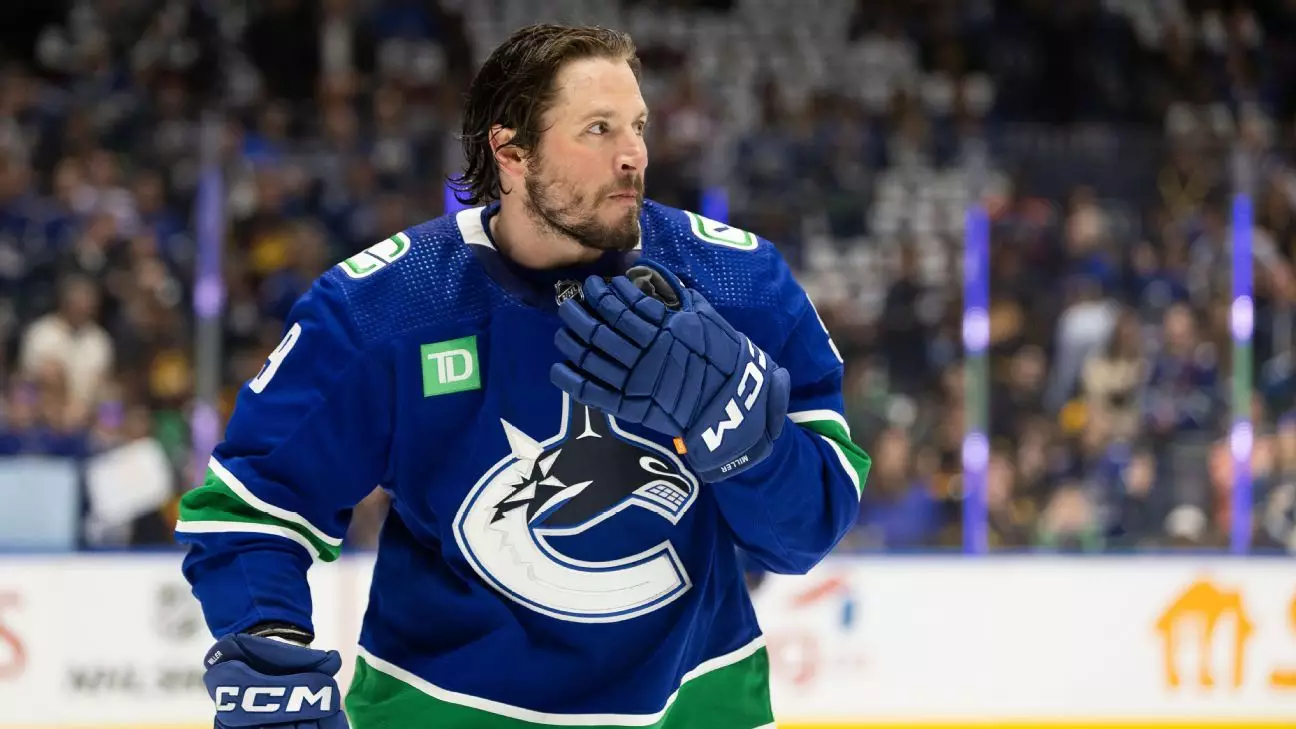The dynamics of the National Hockey League (NHL) often shift dramatically with trade talks, injuries, and team strategies. For the Vancouver Canucks, the recent chatter surrounding forward J.T. Miller has created substantial speculation among fans and analysts alike. General manager Patrik Allvin’s response to rumors of a potential trade to the New York Rangers underscores a delicate situation within the organization. This article scrutinizes the implications of these developments on the Canucks, their roster composition, and overall team morale.
Reports surfaced over the weekend detailing that the Canucks contemplated trading J.T. Miller to the Rangers, which hints at internal strife or significant re-evaluation of roster strategies amidst a turbulent season. The potential deal reportedly included not only Miller but also other players and draft picks. However, the trade did not materialize, leading to Allvin’s statements that avoided concrete details. Instead, he articulated an ongoing commitment to exploring avenues for improving the team without offering clarity on which players might be considered untouchable.
As a fan or analyst, one might wonder what this reluctance signifies. Is Miller’s status truly ambiguous, or is this part of a larger strategy by Allvin to leverage negotiations? The phrase “always trying to explore how to make our team better” suggests an inherent pragmatism within the manager’s philosophy, underscoring that change is always a possibility within the flux of professional sports.
Miller’s performance this season—31 points in 35 games—is solid, particularly when juxtaposed with his 103 points last season. Yet, the Canucks are grappling with a disappointing record of 20-15-10, placing them outside a playoff spot. The pressure mounts not just on Miller but on the entire organization to reconcile individual potential with collective performance. Personal relations within the team, particularly Miller’s alleged issues with star center Elias Pettersson, raise concerns about locker room dynamics.
The notion that both players have a strained relationship, previously acknowledged by former coach Bruce Boudreau, further complicates the narrative. Disputes over linemate quality have reportedly contributed to their captain’s communication breakdown, and the involvement of the media has only heightened visibility around their interactions. When Miller reportedly referred to Pettersson as a “baby,” it signaled a growing tension that could ripple through an already beleaguered franchise.
Canucks captain Quinn Hughes and Allvin’s comments about player morale reveal a split burden: the weight of communal performance under the scrutiny of the media and maintaining individual player motivation amid rumors. Allvin expressed empathy for players dealing with public speculation, emphasizing the importance of creating a supportive environment to navigate such challenges. His pride in how the team has handled external noise reflects an understanding of the mental fortitude required in competitive sports.
Moreover, the performance following these tensions—in particular, their recent victory over the Edmonton Oilers—could be viewed as a testament to the players’ focus on the game rather than distractions. Miller’s defensive contributions and scoring under pressure speak to his professionalism, as he publicly declared his commitment to the Canucks amid swirling rumors. “I’m planning on being a Canuck today, tomorrow,” he stated, highlighting an essential mental toughness in handling trade talks.
Allvin’s affirmation of the team’s core strength despite challenges signals a deeper belief in a strategic turnaround. Yet the ultimate challenge lies in addressing the underlying issues plaguing team dynamics. As he considers the future of the coaching staff, including Rick Tocchet, who currently has a club option extending through the 2025-26 season, the decision must reflect a coherent vision for the Canucks.
In analyzing the future, it boils down to whether Miller and Pettersson, along with other key players, can harmonize their contributions for the greater good of the team. Will Allvin’s strategies yield a playoff-worthy roster, or will ongoing frustrations lead to more upheaval? Only time will tell if these rumors signal a prompt reckoning or a turning point towards a more cohesive Canucks identity.
While the Canucks navigate trade rumors and interpersonal conflicts, understanding the individual and collective components of athlete performance becomes vital for any hopes of resurgence. J.T. Miller’s role will undoubtedly influence this trajectory, but clarity of vision and unified player dynamics must come first if Vancouver is to reclaim its standing in the competitive NHL landscape.

